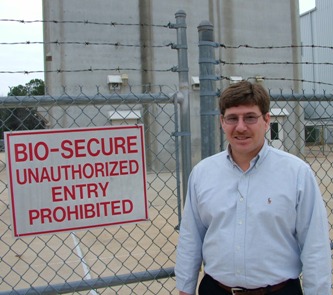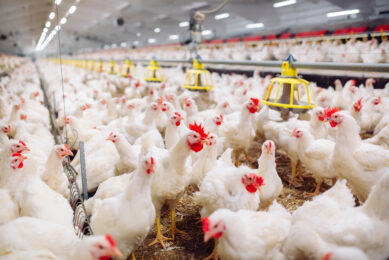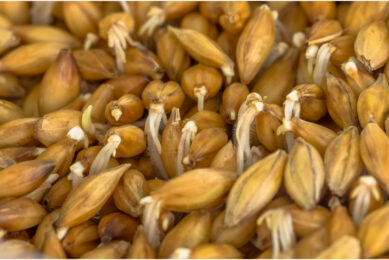The cleanest feed mill in the world

When feeding the most expensive birds in a breeding company you want to be sure the feed is the safest that you can provide. Technology and biosecurity aid poultry breeder Aviagen to manufacture absolute safe feed for their breeding stock.
By Dick Ziggers
Aviagen, headquartered in Huntsville, Alabama, USA, delivers day old broiler chick and turkey grandparent and parent stock to over 300 poultry producers in over 100 countries. Key focus is to keep flocks free from Salmonella. In order to achieve this and to keep this task under corporate control a dedicated feed mill was built in 1999 in Athens, Alabama. The investment in feed processing facilities for heat treatment of feed ensures a significant reduction in the exposure of breeding flocks to the risk of infection from feed-borne pathogens.
The implementation of strict protocols on the movement of people, stock and equipment within the production operation ensures that the risk of infection is considerably reduced. “Every week, over 200 samples are taken, even inside the compartments of the feed trucks, and sent to our lab for analysis. So far they all returned negative” says Richard Obermeyer, Director of Feed Production at Aviagen. The mill is split into a clean and a “dirty” area. The dirty area is the part where the ingredients come in, are weighed, ground and mixed. From this side of the mill the mash is transported to the clean part of the mill, where the feed is processed and heat treated (building two) and then goes into the final product storage and load-out, part three of the mill.
Basic but consistent feed
Because of making feed for broiler breeders only few ingredients are required. Corn and soy are the main ones complemented with micro and macro additives and a little fishmeal, which has a positive effect on fertility. Three basic types of feed are manufactured: pullet starter, pullet grower and layer feed. Next to that small quantities of feed are manufactured for pedigree birds. “Consistency of feed quality is very important,” explains Obermeyer. “Suppliers of ingredients have to comply with our standards.” The whole lay-out of the mill is focused on biosecurity. Around the mill a large area is paved with concrete. “Rats do not like to cross large distances in the open,” Obermayer says. Around the buildings there are also bait stations for rodents.
In the receiving area for raw materials trucks enter the building through high-speed doors, mainly for dust, rodents and bird control. Furthermore there are no pits, everything is built above ground. “We wash and disinfect the outside facility every month. Also insecticides are sprayed regularly, because insects can carry Salmonella”.
Processing with heat
In the central processing building ingredients such as phosphates and limestone are transported pneumatically to avoid dust. Also special filtration units are placed to deal with dust. After the mash bin on the third floor, the feed goes to a feeder screw that transports the mash to a Wenger DDC conditioner located on the second floor. In this twin shaft conditioner the mash remains for two minutes and steam is added to obtain a temperature of 185°F (85°C).
The shafts in the conditioner run at different speeds which suspend the feed and gives better penetration of steam into the particles. From the DDC the hot feed is discharged into a Wenger Universal Pellet cooker (UPC). This area is ventilated with filtered air and the extruded feed from the UPC is moved through an airlock to a Bliss counterflow cooler.
The processing area has tight biosecurity rules. The operator inside the building enters the area, takes of his clothes, showers and slips into working clothes. He stays in the clean area the whole shift. If he leaves and re-enters he has to shower again. Even the working clothes are washed and dried inside the area. Food that operators take with them has to meet specific requirements on hygiene. Once cooled down to ambient temperature the pelleted feed is either crumbled or the crumbler is bypassed and the feed is directly conveyed to the finished feed building. From here the feed is transported with Aviagen’s own trucks to the farms, which are located in a 90 mile radius from the mill. When loading a truck a driver enters the load-out area through high speed doors. He stays inside his truck and moves his vehicle back and forth underneath the load out scale on horn signals from the operator room. Once filled, he leaves the load-out unit again through a high speed door.
Obermeyer acknowledges that the feed they make is more expensive then regular poultry feed, but “we can ensure our quality for hundred percent and the birds that eat the feed are so expensive that it justifies the investments and efforts,” he says.











